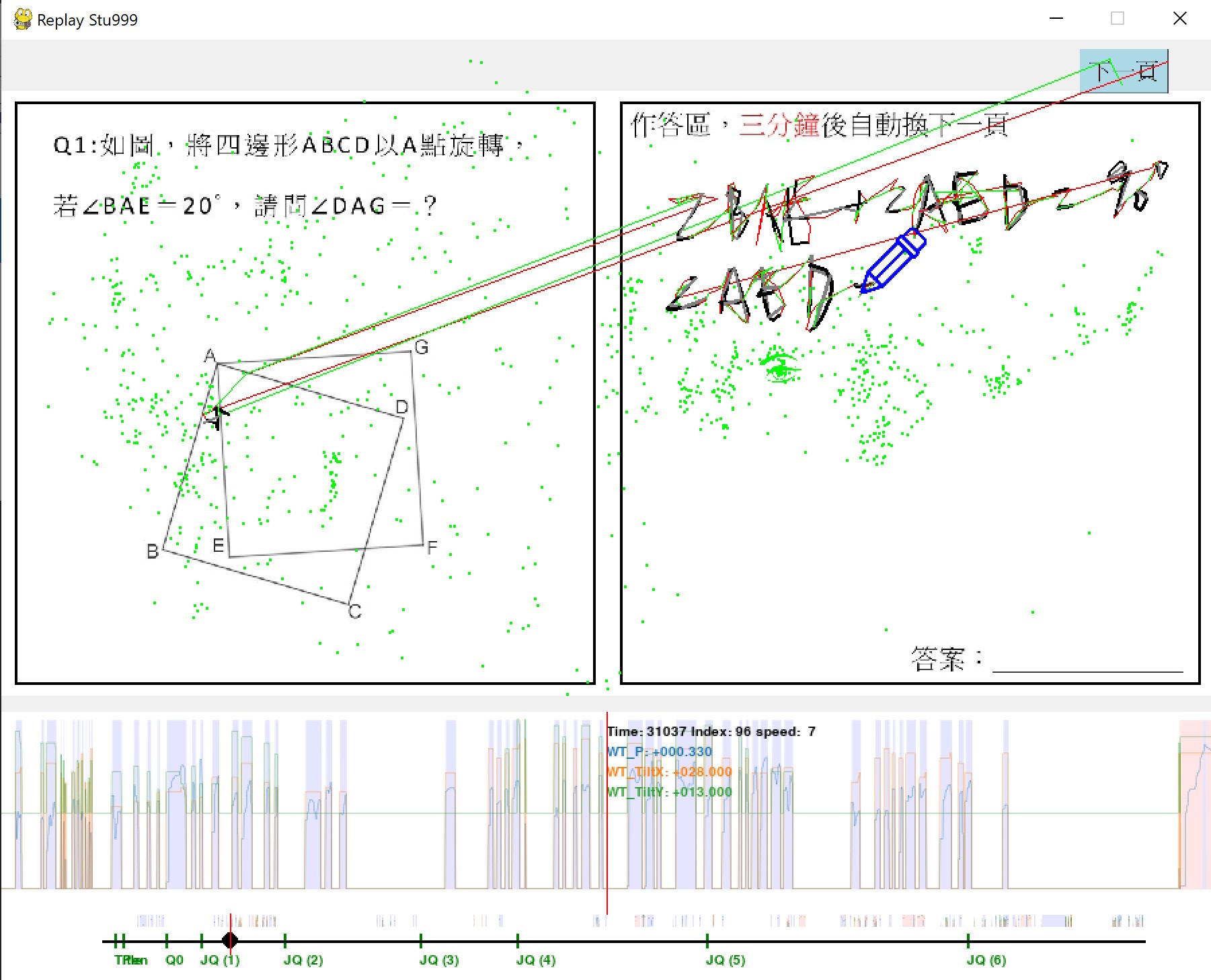Introduction: By building a digital problem-solving environment, students are engaged in solving problems while their complete problem-solving processes are recorded. This enables a more intuitive observation of their solution pathways and the difficulties they encounter.
Method: A digital problem-solving environment was developed using Python, which synchronously records both eye-tracking data and handwriting data. This allows for replaying the entire solution process, including what students wrote, what they erased, and how their gaze shifted during the problem-solving process, thereby reflecting their attention distribution and reconstructing a complete problem-solving trajectory.
Value and Impact: Traditionally, teachers diagnose students’ mathematical problem-solving performance mainly through test papers, which represent only a single time-point measurement. Such an approach cannot fully reflect the entire problem-solving process, making it difficult to diagnose where students encounter difficulties. For example, if a student initially adopts an incorrect strategy and later erases it, teachers may struggle to identify the challenges the student faced. With the digital problem-solving environment, students’ complete problem-solving processes are fully recorded and dynamically visualized, addressing this limitation. Reconstructing these processes can also serve as a valuable reference for both learners and educators in conducting metacognitive analyses, thereby supporting the diagnosis of learning difficulties and providing more fine-grained instructional guidance.
Problem-solving processes in junior high school mathematics geometry transformations
Video:https://owncloudjohn.ddns.net/owncloud/index.php/s/0FuWLynIlz19Ivn

Visual attention tracks in solving mathematical symmetry problems
Video:https://owncloudjohn.ddns.net/owncloud/index.php/s/lO302d28rWiJ3JP



